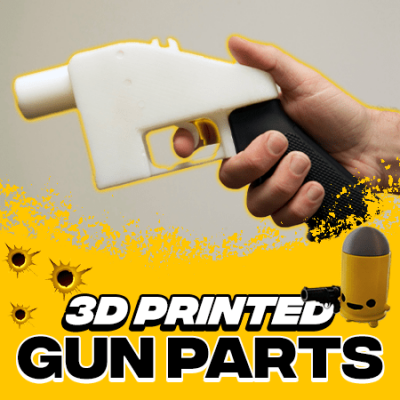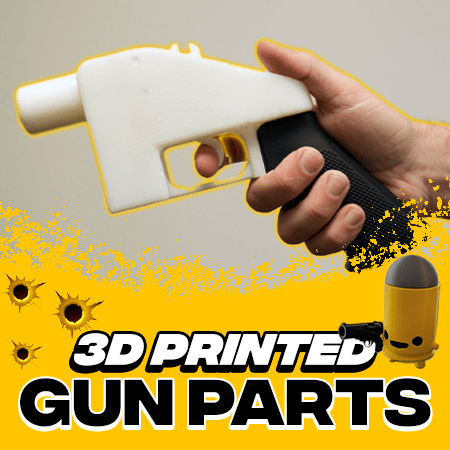 3D printers are capable of making a lot of different things, from phone stands to functioning organs and everything in between. One of the more recent and more controversial ways people are using 3D printers is to make firearms.
3D printers are capable of making a lot of different things, from phone stands to functioning organs and everything in between. One of the more recent and more controversial ways people are using 3D printers is to make firearms.
3D printed guns, also known as “ghost guns,” are real, working firearms that comprise many 3D printed plastic components. Of course, the actual shooting mechanism, including the barrel, hammer, and ammunition, can’t be 3D printed for strength and functionality reasons. But the lower receiver portion of the gun, like the frame and trigger guard, can be.
Over the past few years, 3D printed guns have come under a lot of heat, as they’ve been cited as being used by dangerous criminals. But, depending on where you live, if you’re of legal age and follow some basic rules, 3D printing your own firearm is actually legal, and the weapon can’t be taken from you by law officials.
Today, I’ll be going over everything that has to do with 3D printed guns, including what exactly they are, what types of guns can be 3D printed, and more!
Table of Contents
- What is a 3D Printed Gun?
- History of 3D Printed Gun Parts
- What is a Ghost Gun?
- Three Categories of 3D Printed Guns (Anatomy of 3D Printed Gun Parts)
- Types of 3D Printed Guns
- 3D Printed Gun Parts: What Can You Actually 3D Print?
- What Filament Material to Use in 3D Printed Guns?
- How to Make/Create a 3D Printed Gun?
- Process Behind 3D Printed Guns
- Risks Associated with 3D Printed Guns
- Where are We Now? Different Laws for 3D Printed Guns Parts in Various Countries
- Debate and Controversy
- Who Uses 3D Printed Guns?
- Is it Legal to 3D Print a Gun?
- Do You Need a License to Have a 3D Printed Gun?
- Does a 3D Printed Gun Work?
- Are 3D Printed Guns Untraceable?
- Where to Find 3D Printed Gun Models and Blueprints?
- The Bottom-Line
What is a 3D Printed Gun?
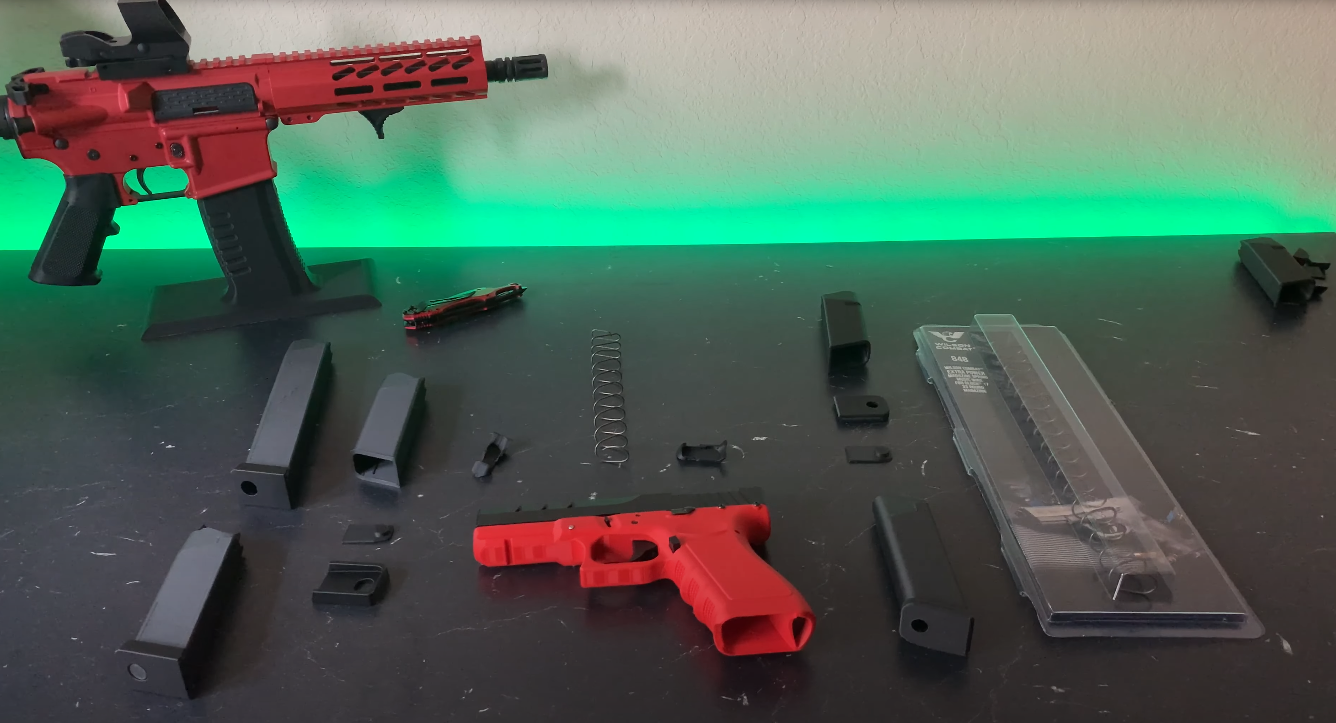
Different 3D printed gun parts include: grips, ammo boxes, lowers, magazine holders, triggers, grips, receivers.
A 3D printed gun (not the toy kind) is a firearm that is made up of some 3D printed parts.
It’s important to note that 3D printed guns ARE NOT 100% 3D printed. In fact, the only 3D printed parts on most “3D printed” guns are areas of the lower receiver section, such as the grip, frame, and trigger guard.
The lower receiver of a gun is the only individual part of a weapon that requires a background check to be purchased. As such, 3D printing the lower receiver is a way to avoid a background check and still own a functioning firearm.
Much of the actual shooting mechanism, though, such as the hammer, barrel, and spring, can’t be 3D printed. That’s because these components require much more strength, durability, and other properties that can’t be achieved through 3D printing (yet). As such, people who build 3D printed guns must purchase these parts.
While 3D printed guns can vary in their strength, durability, and accuracy, most of them are far less accurate and reliable than normal, traditionally-manufactured guns. That’s because casted metal components, which are used for regular firearms, are far more durable and long-lasting than 3D printed plastic parts.
History of 3D Printed Gun Parts
3D gun printing has had a turbulent history. People constantly debate whether 3D gun printing should be allowed or not, and a solid conclusion hasn’t been drawn yet.
The story began in 2013 with Cody Wilson. He was the founder of an open-source gunsmith organization called Defense Distributed and the Liberator was the first 3D-printed gun he designed.
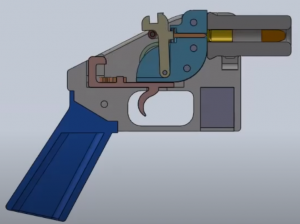
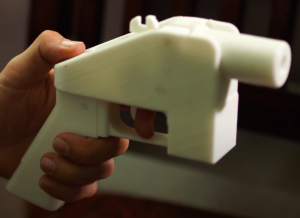
What was surprising was the overwhelming desire for such a gun. People across the globe downloaded the design file 100,000 times in two days.
The US Department of State didn’t let this slide and forced Cody Wilson to remove his model from the internet.
The incident spawned a legal battle that lasted five years. Finally, in 2018, things turned in favor of gun advocates when the Trump administration legalized 3D-printed guns. Defense Distributed was back in business.
During the same time, Cody was charged with sexually assaulting a minor, and was forced to step down from the organization.
The tides once again turned late 2018 when a federal Seattle judge ruled 3D printed guns illegal once again. He ordered Defense Distributed to stop sharing gun blueprints.
Many weren’t pleased with this move which prompted Deterrence Dispensed, a new organization, to come up. Compared to Defense Distributed, this organization was decentralized, making it easier for them to avoid a lawsuit.
Deterrence Dispensed strove to give the public full access to their files. They often cite the Second Amendment in their arguments, propping it as the reason for the founding of their organization.
More recently, 20 states and the District of Columbia united to file a lawsuit against the federal government for allowing the files to be circulated publicly on the internet.
What is a Ghost Gun?
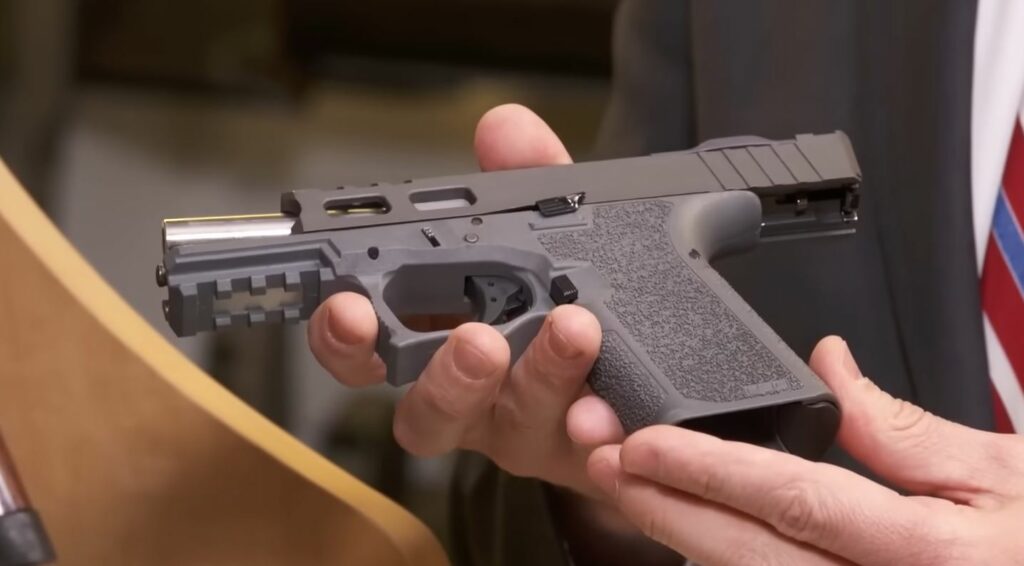
A ghost gun is any firearm that doesn’t have a serial number and is, thereby, difficult to trace back to an owner. Moreover, serial numbers help law enforcement and other agencies to track firearms back to an owner because all gun manufacturers are mandated by law to assign unique serial numbers to every weapon they make.
Because 3D printed guns are homemade and are built from an assortment of 3D printed and individually-purchased components, they don’t contain a serial number, making them “ghost guns”. This is the main reason why many criminals use ghost guns, as it helps them get away. However, as I mentioned, the majority of people who 3D print guns just do it for fun and aren’t concerned about the lack of a serial number on the weapon.
Besides 3D printed guns, though, ghost guns can also just be regular, traditionally manufactured guns that have somehow escaped the serial number assignment process.
Three Categories of 3D Printed Guns (Anatomy of 3D Printed Gun Parts)
1. 3D Printed Receivers/Frames/Parts Kit Completion Builds
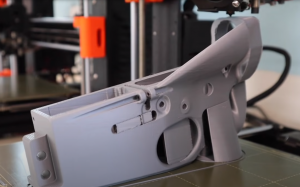
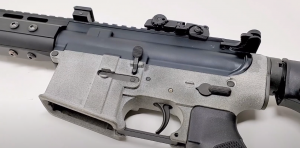
Printed guns with only a few 3D printed components come under this category. The majority of parts are purchased separately. After components are purchased and printed, they need to be assembled.
These guns last a long time. They have the capability of firing 1000s of bullets before breaking down.
2. 3D Printed Hybrid Firearms
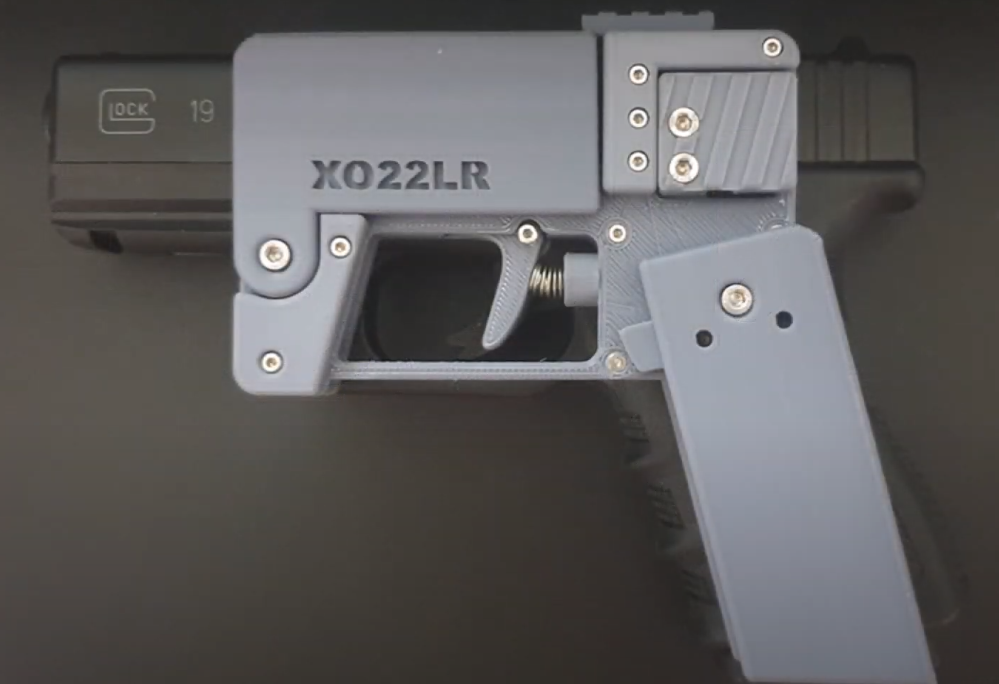
3D printed hybrid firearms are mostly made of plastic printed components compared to the previous category. Other components are purchased separately.
If you look from the outside, these look fully plastic. However, they have many metallic parts in the interior.
Screws, springs, hydraulic tubing are just some of the parts 3D printed. Other components can be gleaned from commercial guns.
3. Fully Printed Firearms
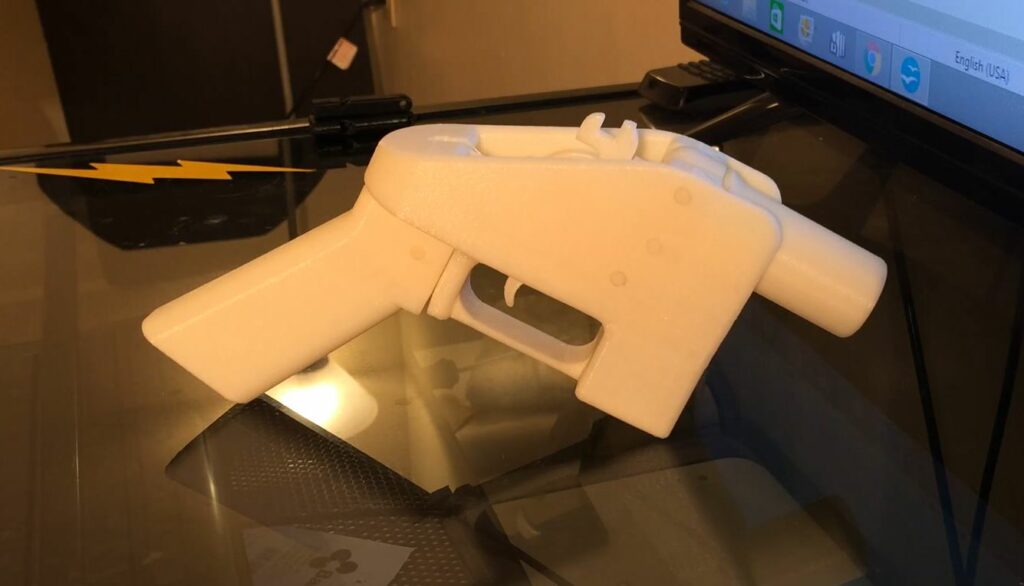
The Liberator is a prime example of a fully printed firearm. Other guns in this category are the Songbird and the Washbear.
Fifteen of the sixteen parts of the Liberator were made with ABS (a thermoplastic), and just one part was made of metal – the firing pin.
In an ideal scenario, The Liberator lasts a single shot. But in the worst case, they shatter in your hand upon pulling the trigger, according to several reports of unfortunate users.
PLA is another plastic used to make 3D printed guns. It’s more economical and safer than ABS.
Fully 3D printed plastic guns look unique. They usually have a lifespan of anywhere between 1-30 rounds, after which they stop working.
Metal guns can also be made, but they’ll cost you an arm or leg (possibly your brain and kidneys as well). The Solid Concepts 1911 is a fully printed metal gun using DMSL. It’s the 3D printed version of the M1911 pistol.
The first iteration of the gun was made of 34 3D printed stainless steel components.
Having the ability to print a 3D printed metal gun sounds fantastic right? Well, if you had $500,000 to $1,000,000 in your bank or back pocket, you could own these printers.
Unlike plastic guns, Solid Concepts 1911 can fire around 600 rounds without any damage to the gun.
Types of 3D Printed Guns
There are a few different types of firearms that you can 3D print. In the sections below, I’ve gone over three of the more common gun types that people use 3D printing to make.
Pistol
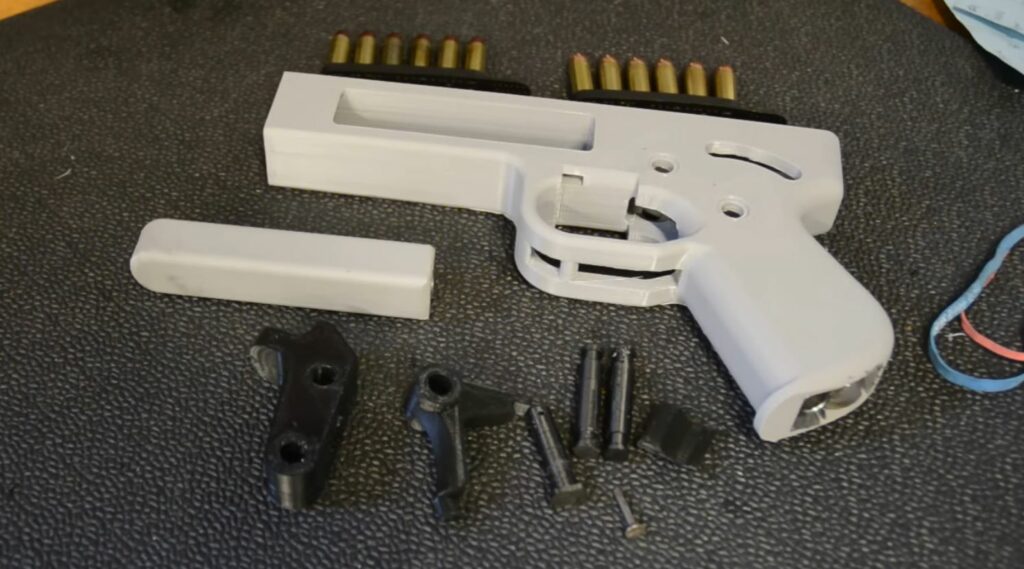
First off, we have pistols, which are the most popular type of handgun. Pistols have fixed chambers, can be stashed on a waistband, and can be used with either one or two hands.
Pistols are easily the most popular class of guns that people 3D print, usually because the shape of the lower receiver is a bit easier to print compared to other types of guns. Additionally, the lower receiver part of a pistol can fit on most 3D printer’s build plates.
Rifle
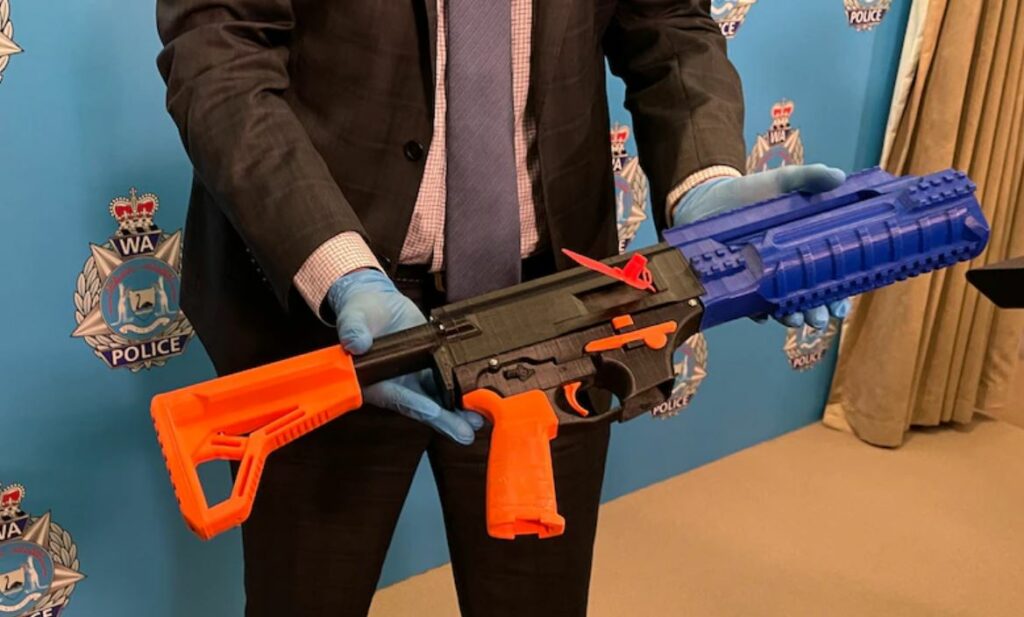
Rifles are obviously a bit larger than handguns, but people have still been able to 3D print many parts of this type of firearm. The only difference is that, instead of printing the lower receiver of a rifle in one go, most users split the model into multiple parts, which are glued together after printing.
Because you often have to adhere multiple 3D printed parts together to form the full lower receiver of a rifle-style firearm, the gun is weaker than a handgun. Even dropping the weapon once (which should never happen) could break the lower receiver.
But nonetheless, rifles are, in fact, 3D printable.
Revolver
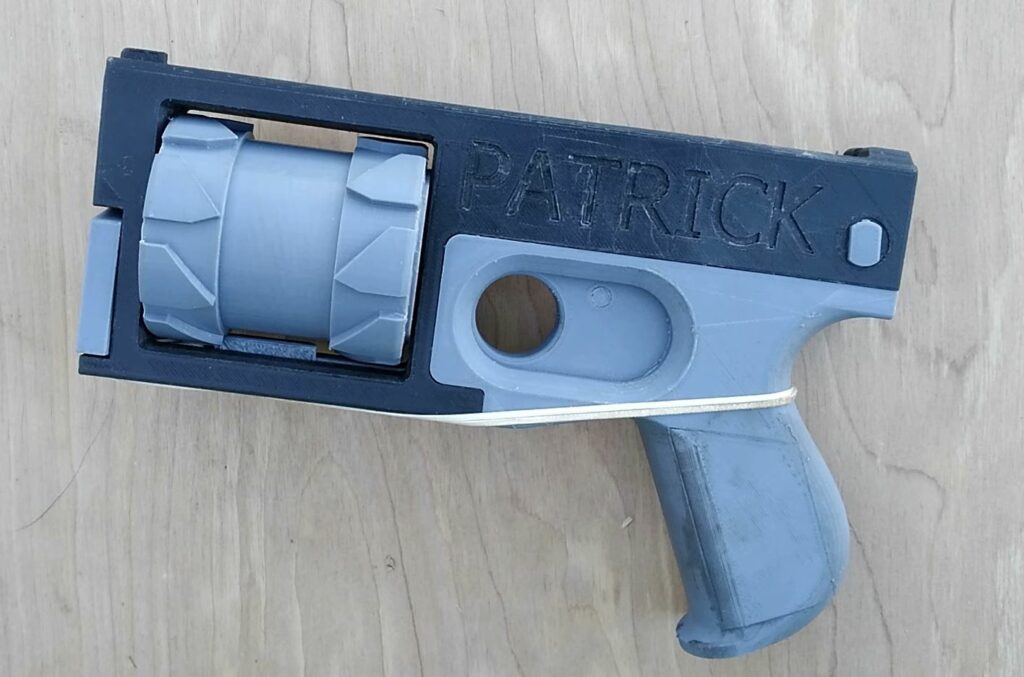
Lastly, you can 3D print a revolver. Revolvers are another type of handgun that uses a cylindrical, rotating chamber for storing bullets. While the structure of revolvers is outdated and vastly different from that of modern handguns and rifles, you can still find some 3D printable revolver lower receivers to make your own 3D printed revolver.
3D Printed Gun Parts: What Can You Actually 3D Print?
In the sections below, I’ve gone over the different parts of a gun that you can 3D print, besides basic rail attachments, like scope mounts and strap hooks.
Lower Receiver
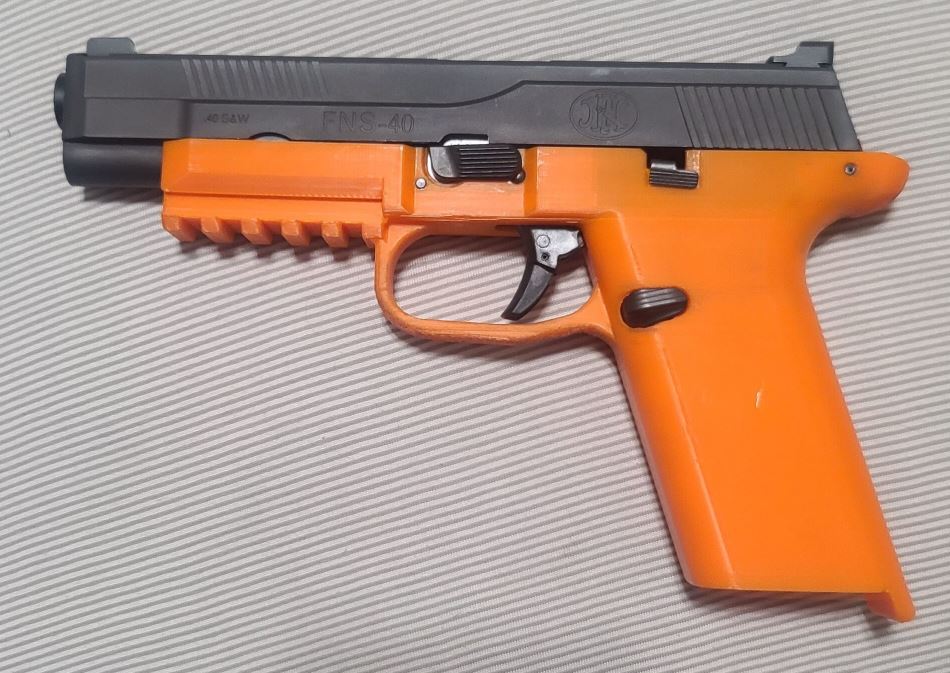
The lower receiver is easily the most popular part of a gun that people 3D print because it’s the only individual part of a gun that requires a background check to be purchased. Furthermore, 3D printing the lower receiver effectively makes the gun a “ghost gun”.
And, if you’re wondering what exactly the lower receiver is, basically, it’s the general term for the lower half of the frame of the gun. The lower receiver typically includes the handle, trigger guard, grips, and mag release mechanism.
You can 3D print the lower receiver of a handgun on most 3D printers, and it should work just like a normal, store-bought one. The only problem is that internet censorship has made it very difficult to find downloadable lower-receiver 3D models. Check out the section on “Download or Make Your Own 3D Model Gun Parts” to learn more about where you can find and download these models.
Magazine
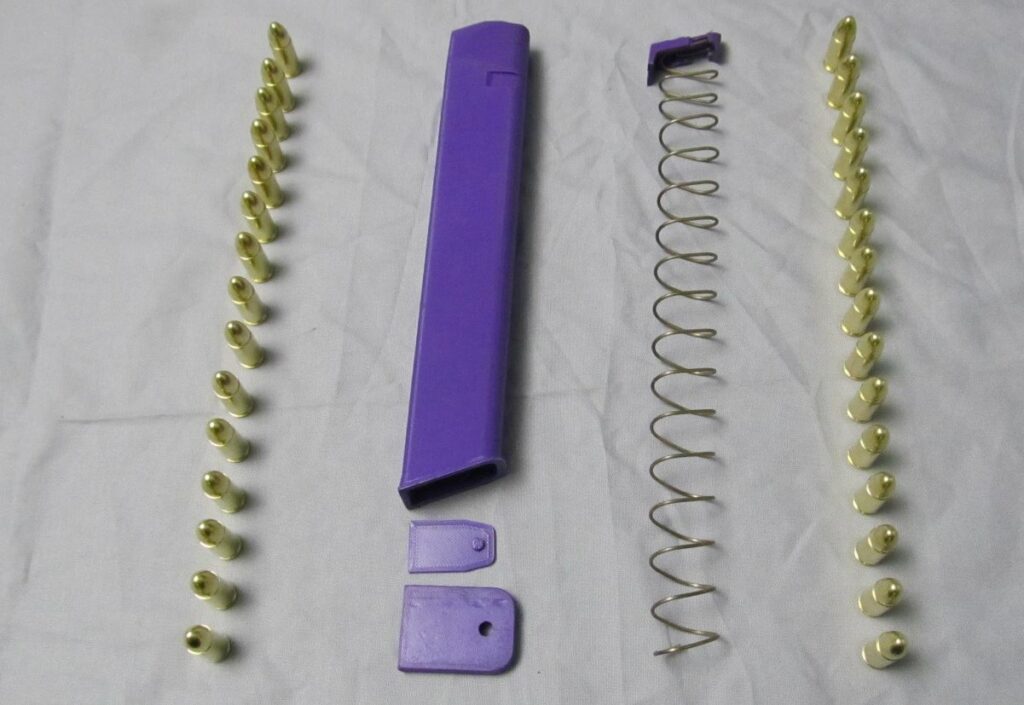
The magazine, or “mag” for short, is where ammunition for the gun is stored before it’s loaded into the chamber and fired. Magazines usually contain a few springs, but the majority of the assembly can be 3D printed.
If you plan on 3D printing a mag for your gun, make sure you choose a design (or make one yourself) that’s compatible with your gun. Also, make sure there is a way to insert the necessary springs and other non-3D-printable components into the mag.
Suppressor
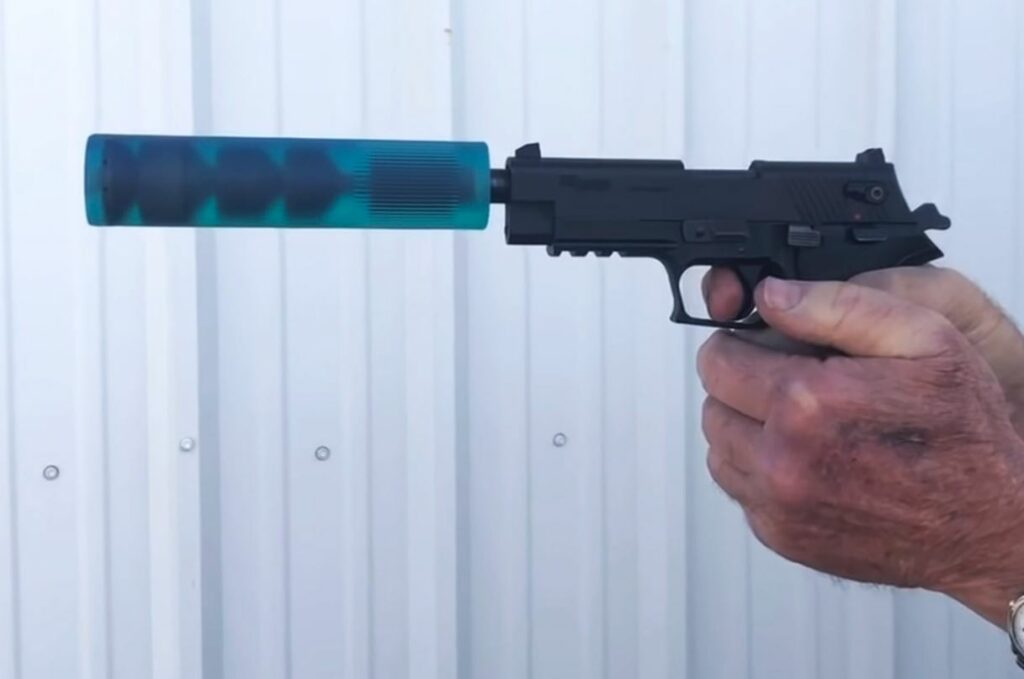
Suppressors are a gun attachment that screws onto the end of a gun’s barrel to help suppress the recoil of the weapon to make it a bit easier to use. Suppressors are heavily restricted in the United States (and the rest of the world) so even buying a regular, traditionally manufactured one is difficult.
Technically you could 3D print one, and people do; but because suppressors rely on certain dampening properties of the materials they are made out of, 3D printed suppressors aren’t super useful as plastic isn’t super good at absorbing vibrations.
Grips
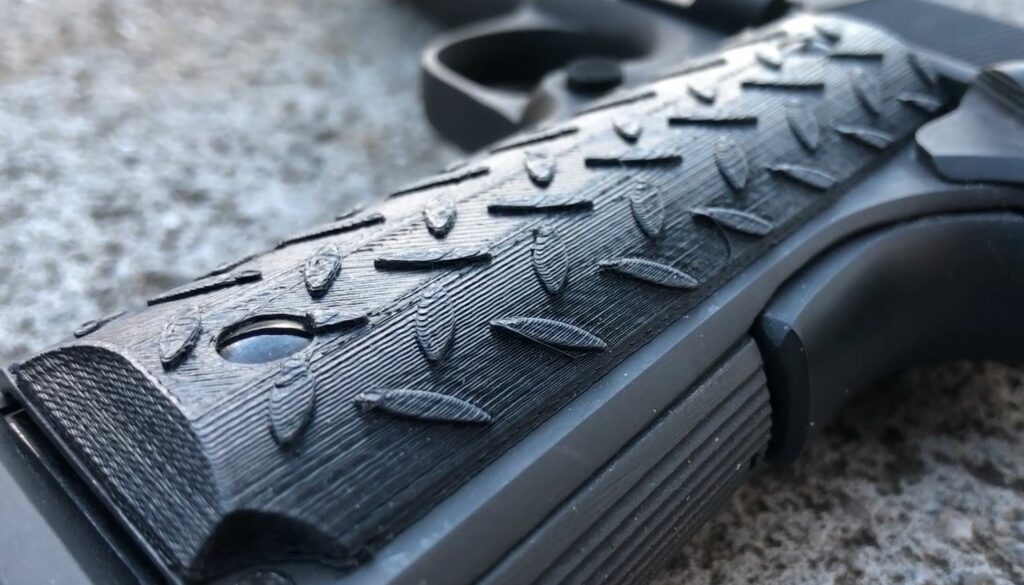
The grip of a gun is extremely important to the user’s accuracy and overall handling of the firearm. Different people like different handle grips for their firearms, and you can use 3D printing to make custom-designed grips for all your guns.
Usually, the grips on a firearm are built into the lower receiver frame, so if you want to 3D print a gun and add a custom grip, you might have to modify an existing design. Or, you can design your own lower receiver and add your desired grip shape into the 3D model.
Speed Loader
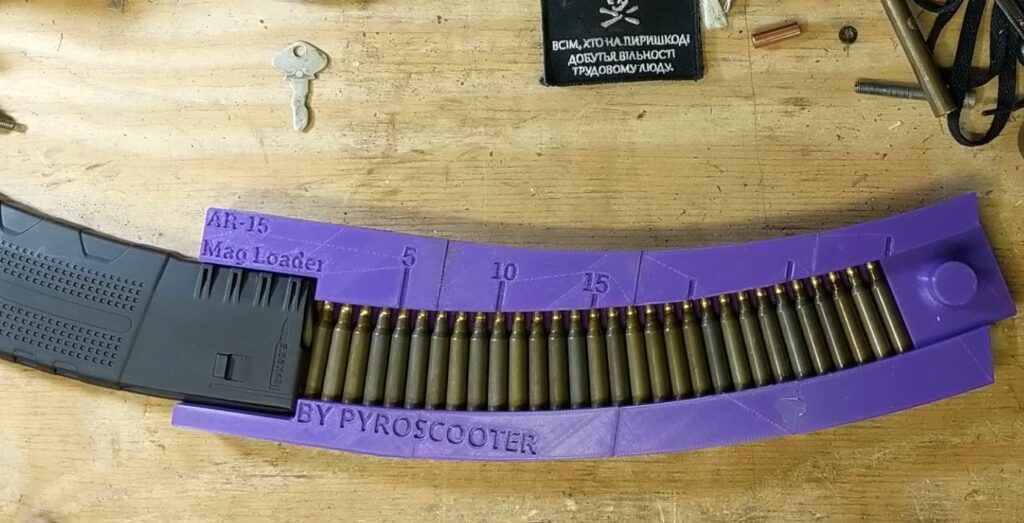
Lastly, you can 3D print speed loaders, which are handheld mechanisms that make it easy to quickly reload a magazine for a gun. As speed loaders are only an accessory to a gun, whether it’s 3D printed or not, there aren’t any restrictions on 3D printing this type of part or any magazine reloading assistant. And many speed loader models can be found on 3D printing repositories, like Thingiverse.
What Filament Material to Use in 3D Printed Guns?
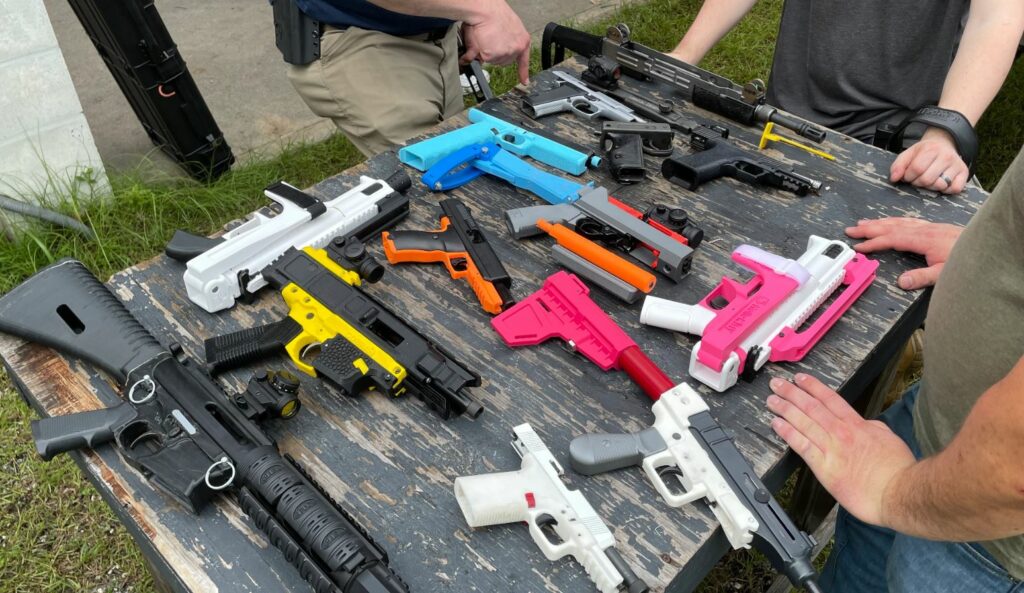
The most common filament material used to print 3D guns is PLA (Polylactic acid) or ABS (Acrylonitrile Butadiene Styrene), as these types of filaments can be bought basically anywhere and are relatively inexpensive.
However, ABS and PLA aren’t necessarily the best filament materials for 3D printing gun parts. Moreover, while ABS and PLA are very popular for 3D printing, the two thermoplastic materials aren’t super strong. As such, a 3D printed gun made out of ABS or PLA parts might not be as reliable, durable, or accurate as one made from a stronger filament material.
If you want the best 3D printed gun, consider using PETG or, if you have some experience with 3D printing, polycarbonate filament. These two filament materials are a lot stronger than ABS and PLA, and your 3D printed gun will perform much better.
The trade-off with using these filament materials, though, is that both PETG and polycarbonate (PC) are more difficult to print. As such, you might want to start off printing some parts in PLA or ABS and then work your way up to PETG and PC filament.
Check our article on the best material for 3D printed guns to learn more.
How to Make/Create a 3D Printed Gun?
Making your own 3D printed gun, while easy in theory, is a bit difficult given the lack of information about the topic. To no surprise, the government and tech companies have removed a lot of information surrounding the process for making 3D printed guns, despite the fact that these types of weapons are legal in most of the United States.
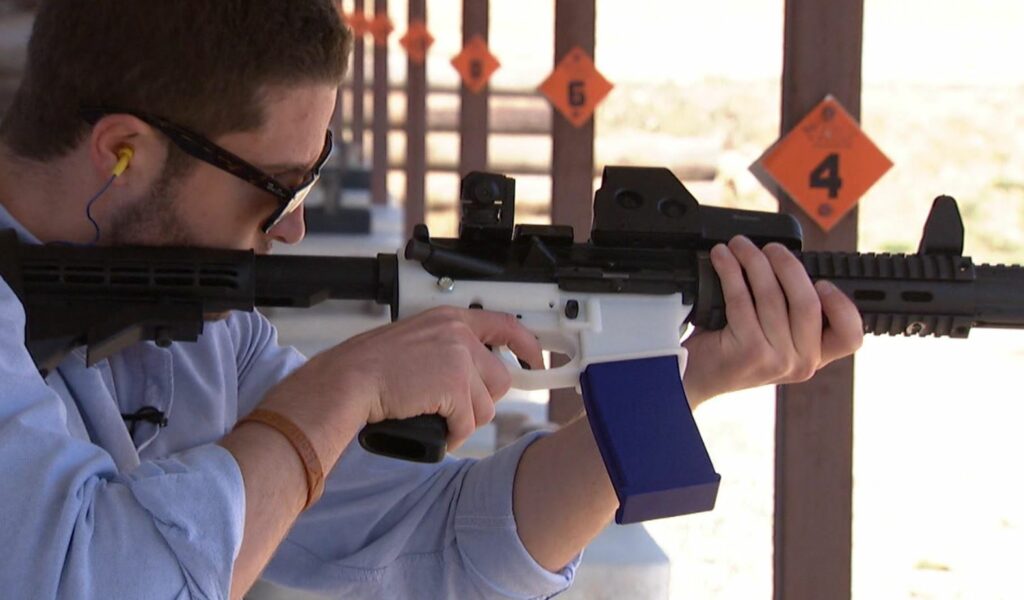
Below, I’ve gone over the general steps for building your own 3D printed gun. I tried to make the guide as universal as possible, so I didn’t dive into much detail about the specifics of the assembly process, as hardware will vary from person to person.
1. Download or Make Your Own 3D Model Gun Parts
The first step to making your own 3D printed gun is to download the files of the parts that you want to 3D print. At a minimum, this should include the lower receiver, as this is the main 3D printed part of a “3D printed” gun.
However, you might also want to 3D print other parts for the gun, such as the magazine, a special grip, or some of the other parts we talked about a few sections back.
It’s important to note that you likely won’t find any of the lower receiver parts on the typical 3D printing repositories, like Thingiverse or Printables. That’s because moderators on these platforms often take down models related to 3D printing ghost guns.
Instead, you should try looking elsewhere online. Ctrl+Pew is a great site where you can download a handful of different 3D printable lower receiver models. If you can’t find what you want there, Reddit is a good platform to go to for links to places where you can download 3D printable gun parts.
2. Slice Your Design on Slicer Software
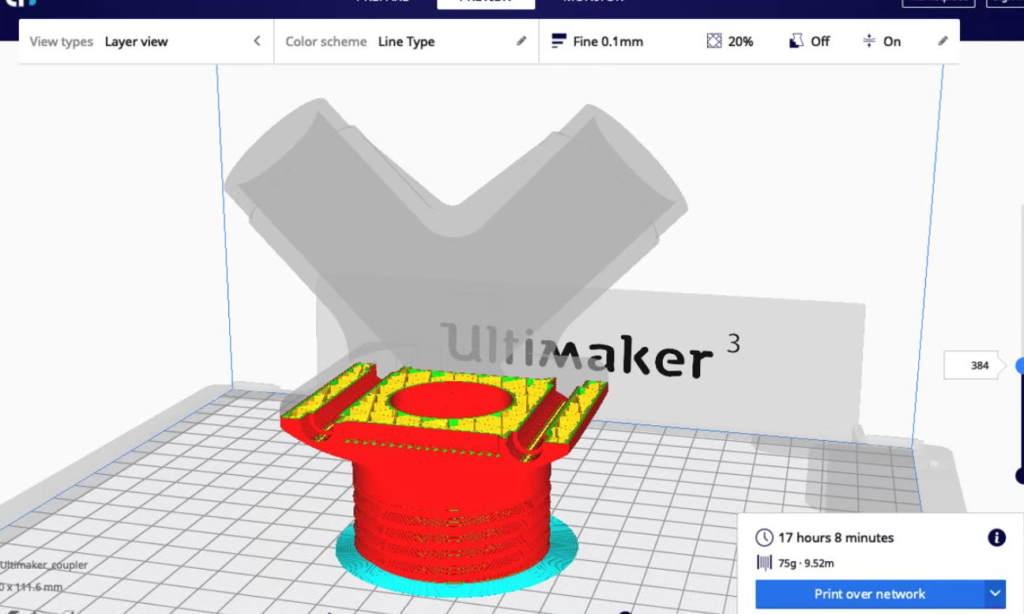
Next, we’ll have to take the 3D models you’ve downloaded and turn them into 3D printable parts. To do this, you’ll need a 3D slicing software, such as Ultimaker Cura or PusaSlicer (both are free).
Once in the 3D slicer, plug in the parameters for the 3D printer and filament material you’ll be using. There are usually pre-set profiles for common printers, like the Creality Ender 3. And the material-specific settings are also available, by default, on the slicer software.
After you’ve set up your slicer for your printer and material, consider adjusting a few of the settings to ensure that your 3D model is printed to be strong. Examples of how to do this include increasing the infill density, increasing the layer height, and using more walls.
Then, click slice and save the G-code file to an SD card.
3a. 3D Print the 3D Model Gun Parts
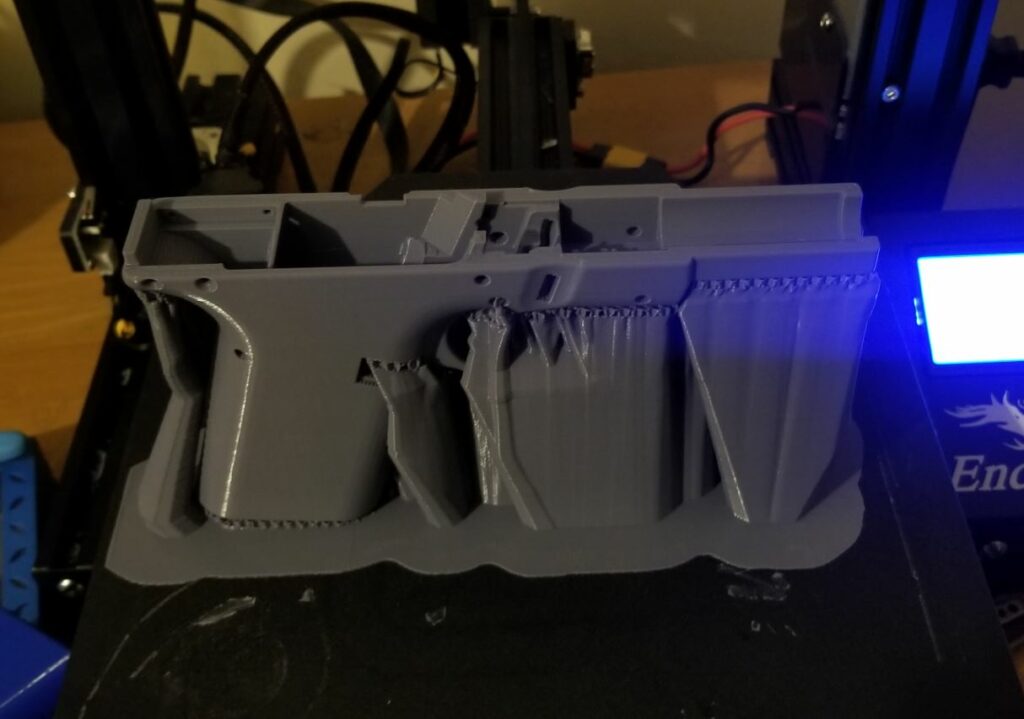
Now that you have all of your 3D models in a printable format, it’s time to send them to your machine. Load the SD card into your 3D printer’s respective motherboard slot, and start the print through your machine’s LCD screen.
While there are many different 3D printers that you can use, I suggest getting an FDM machine for a job like this like the Creality Ender 3 V2.
- Check out our related article on the best 3D printers for guns for more info
That’s because, in the consumer 3D printing space, FDM printers usually are best for making strong parts. Resin (SLA) printers will make more visually-appealing models with a smoother surface texture, but they won’t be as strong and might break if you even drop the part once.
Make sure the first layer comes down nicely, and then just wait for your printer to finish making the part.
3b. Alternative: 3D Printing Service
And, if you don’t have a 3D printer and don’t want to get one, then you can always use a 3D printing service.
On-demand 3D printing services are online services where you can upload a 3D model, select what material you want (and other specifications like color), and they will deliver the finished, 3D printed parts in a surprisingly fast time. Most parts will arrive less than ten days after placing the order.
You can check out our article about the best 3D printing services to learn more about the different options.
4. Post Processing (optional)
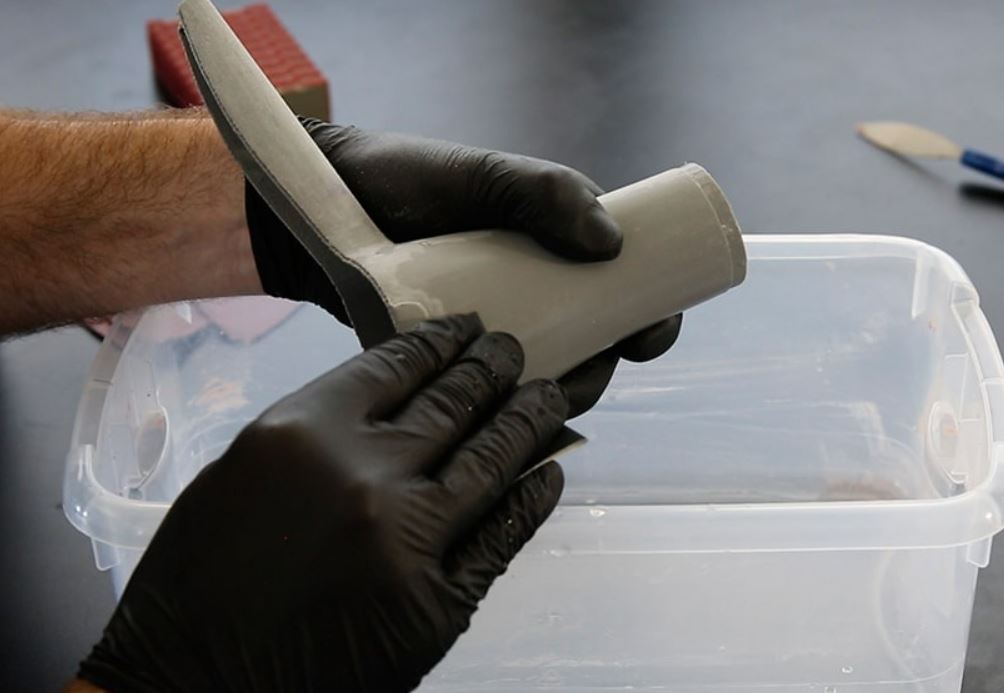
Before assembling the different components into your final product, it helps to post-process the 3D printed parts. Post-processing 3D printed parts makes the 3D models more presentable, so they look less…3D printed.
This step is optional, but you might want to layer smooth your 3D printed parts by sanding them down or using a solvent, like acetone, to yield a super smooth surface texture. Additionally, you might want to paint the parts, so they match (or don’t match) the color of the other components of the gun.
5. Assemble the 3D Printed Gun Parts
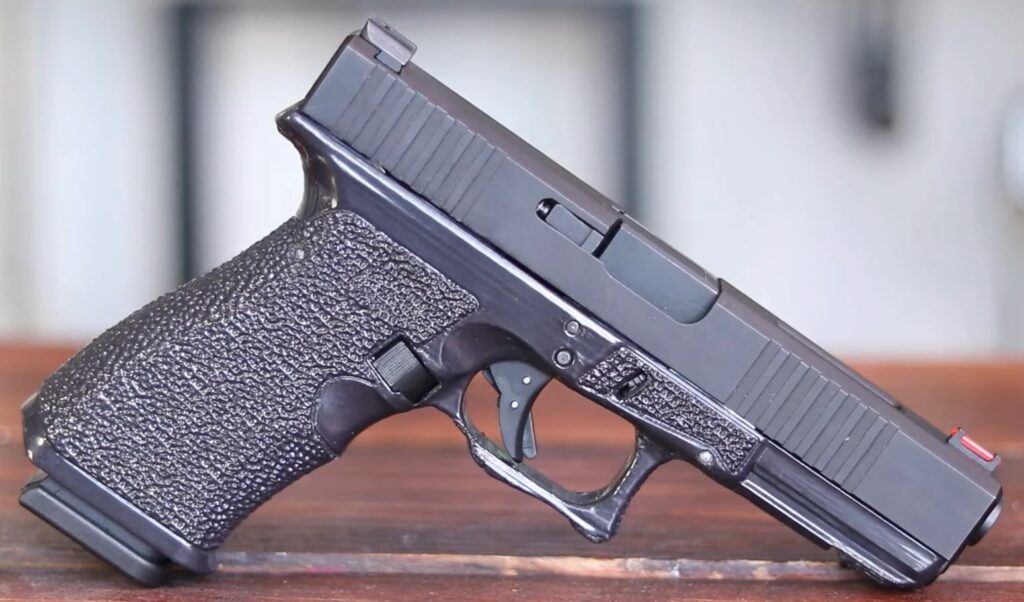
Now, put all of your gun pieces on a mat and assemble them!
As I mentioned earlier, I won’t go into the specific assembly process for a gun as it varies depending on what hardware you’re using, what type of gun you’re making, and other factors. But the parts should assemble the same way they would if they were regular, non-3D-printed parts.
And that’s it!
After you’re done, I strongly suggest testing the assembly without any bullets in the gun just to make sure that everything moves smoothly. And, when you want to test the actual performance of the gun, only do so at a range or another authorized shooting ground.
Process Behind 3D Printed Guns
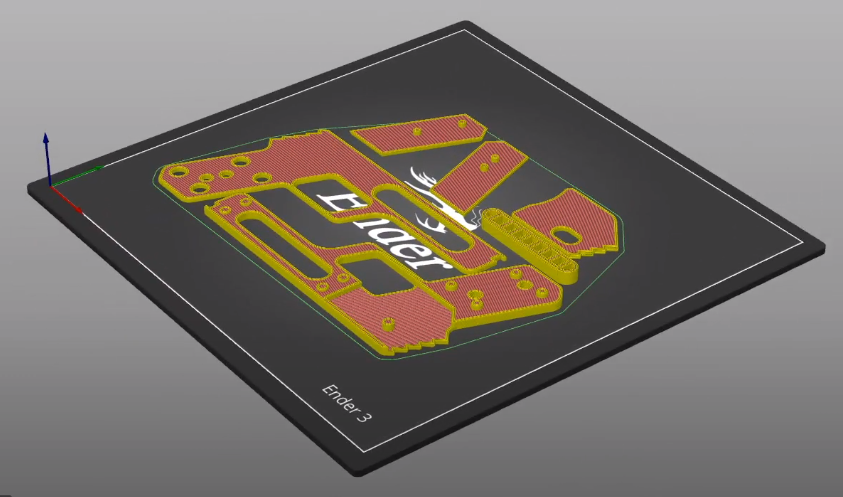
Building a 3D printed gun is more than just downloading a blueprint and pushing ‘print’.
Firstly, you need to design the models with precision. You also need to print each and every component of the gun separately, all the while making sure the parts turn out very accurate.
You then have to assemble these parts carefully to get a fully working gun. The whole process is difficult and time-consuming.
We mentioned two types of plastics used in 3D gun printing – ABS and PLA. ABS is harder than PLA, but it can crack or break easily due to its brittle nature. PLA on the other hand tends to deform more than crack.
Risks Associated with 3D Printed Guns
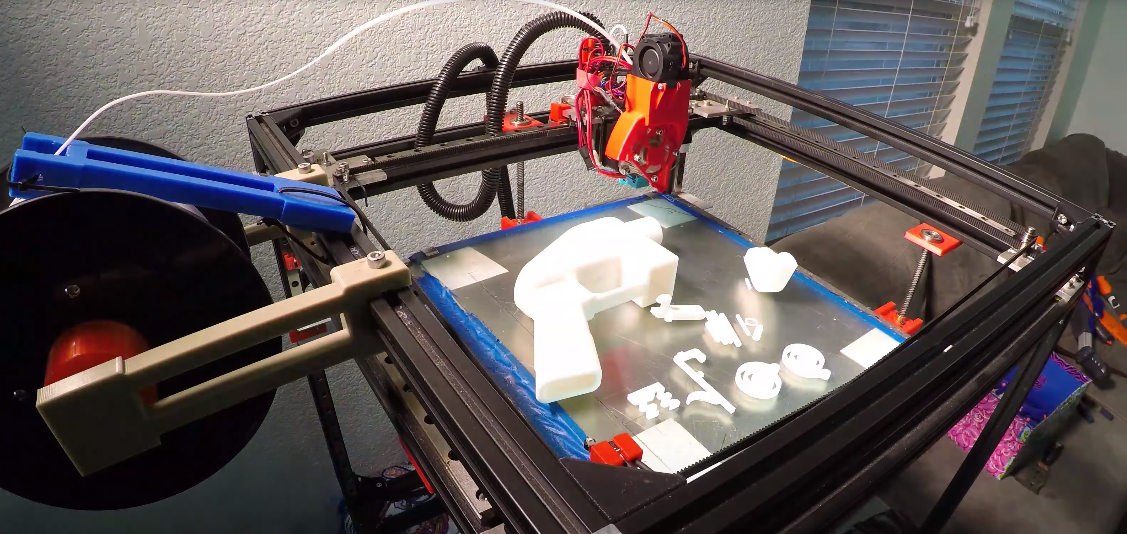
There’s a reason why many countries oppose 3D printed guns. These guns lack an identification code like normal guns do, so tracing them becomes an issue. Without serial numbers, it is hard for law enforcement agencies to do their job.
Anyone can print these guns, even grandma in her basement. While I doubt grandma would pose a big threat, her criminally inclined grandson could.
These guns also cannot be detected in airport or railway baggage scanners. To test this, two reporters from the Mail on Sunday boldly boarded a Eurostar heading from London to Paris with disassembled gun pieces. They reassembled these pieces in the washroom. And they weren’t caught.
There’s a small caveat though, these reporters didn’t carry the metal firing pin or bullet. So the verdict is still out there if these guns pose a threat to airport security.
Where are We Now? Different Laws for 3D Printed Guns Parts in Various Countries
Different countries have different gun laws. We’ll look at each one of them.
United States
Briefly hinted at before, there’s been a lot of back and forth on the issue of 3D printing guns.
Many states in the US do not condone them. But other’s that haven’t given the issue much of a thought.
Californian law states that people owning 3D printed guns must get them approved and registered.
20 states are currently suing the federal government over the Trump administration’s decision to allow gun blueprints to be circulated online. The issue has yet to be settled by the Biden government.
So you can still print these guns legally in many states. Just make sure the particular state you live in allows for it.
Australia
To possess a firearm in Australia, you need to have a license. However, many states don’t have laws against possessing 3D printed weapons. The exception is New South Wales.
The NSW government passed a law prohibiting individuals to own digital blueprints of 3D printed guns. If anyone is caught, they face a maximum of 14 years in prison.
Europe
When the blueprints for the Liberator were first released, people from all over the world downloaded them.
Take a guess which country downloaded the prints the most. No, it wasn’t the United States. It was Spain.
The other European country with a high number of downloads was the United Kingdom.
In the UK, laws as early as 2013 have been passed making it illegal to create, buy, or sell 3D printed guns.
Middle East and Asia
If you do plan to 3D print a gun, I sincerely hope you don’t live in Singapore. Possession of a gun is punishable by death. Additionally, owning 3D gun blueprints is considered a violation.
Japan has strict gun laws as well, which a gentleman named Yoshitomo Imura bore the brunt of. He was found in possession of 3D printed firearms which got him two years in prison. Yoshima later insisted he didn’t know these guns were illegal – he just downloaded the blueprints off the internet.
Debate and Controversy
Of course, 3D printed guns were bound to be controversial.
The main fear about them was their untraceability. On top of that, 3D printed gun owners aren’t subjected to the background checks that regular gun owners go through. This leaves the field wide open for mentally ill, psychotic or underage people to misuse these guns.
On the other side of the debate aisle, gun enthusiasts pooh-pooh the fuss, stating that regular guns are more dangerous than 3D printed ones. They claim that the latter is highly unreliable compared to the former. This is true as some 3D printed guns tend to blast in users’ hands, deform, or wear down quickly.
Who Uses 3D Printed Guns?
A lot of people.
While you might see articles online making 3D printed guns seem like the weapon of choice for criminals, in reality, the majority of the people who make and use these weapons are gun enthusiasts.
Furthermore, there are many people who enjoy using, working with, and building guns. 3D printing gives these hobbyists the ability to make their own guns without spending much money, and they can even modify designs to customize the frame of the weapon to their needs.
Unfortunately, for these enthusiasts, who make up 99.999999% of the people who make 3D printed guns, the use of 3D printed weapons by dangerous criminals makes their hobby look bad.
And, it’s honestly kind of nonsense to believe that a 3D printed gun would be the desired weapon of a dangerous criminal. 3D printed guns are notoriously less accurate and reliable compared to normal guns, which are, frankly, not that hard to get anyways.
The only plausible reason a criminal with bad intentions would employ 3D printing to make a firearm would be to avoid a background check. But even so, that doesn’t take away from the fact that 3D printed guns are mainly used and made by enthusiasts and NOT criminals.
Is it Legal to 3D Print a Gun?
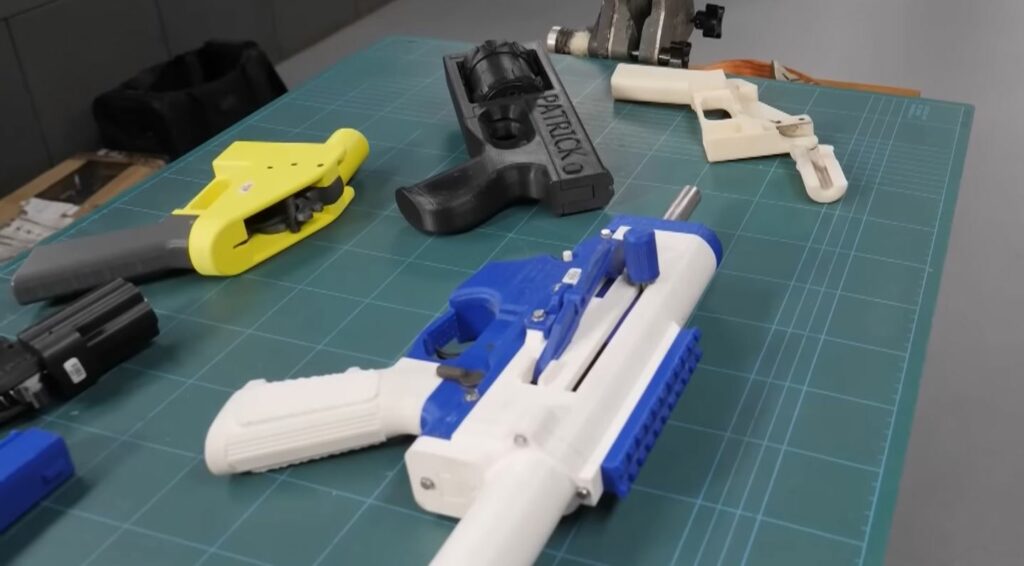
The legality of 3D printing a gun varies by country and state. In the United States, it is currently legal to own and produce (including 3D print) a firearm for personal use as long as it is not for sale or distribution.
However, there are additional restrictions when it comes to 3D printing (or otherwise making) certain types of firearms and accessories, such as automatic weapons and silencers. For instance, all automatic weapons produced after 1986 are illegal, meaning it would be illegal to make an automatic weapon, even if you used a 3D printer.
Additionally, some states have their own laws and regulations regarding 3D printed guns. For example, California has banned the possession of 3D printed guns that do not have a serial number or other identifying markings. As such, definitely check the laws around 3D printed firearms for the state (and maybe also county) that you live in.
And, if you don’t live in the U.S., then you won’t be surprised to learn that the legality of 3D printed guns is even more restrictive. For example, in Australia, it is illegal to manufacture a firearm without a license, and 3D printing a gun would likely fall under this category.
It’s important to note that laws and regulations regarding 3D printed guns are constantly evolving, and it is advisable to check the laws in your specific country or state before attempting to 3D print a gun.
Do You Need a License to Have a 3D Printed Gun?
Going back to the last section, it all depends on the country or state where you live.
In the United States, for example, it is currently legal to manufacture a firearm for personal use, but there are restrictions on certain types of firearms, and certain individuals are prohibited from owning firearms (e.g. felons). Additionally, laws regarding the possession and use of 3D printed firearms may vary by state (in the US).
In other countries, such as Australia, a special license is required to make and own a 3D printed gun. Other countries have also adopted this policy.
At the end of the day, the best way to tell if it’s legal to 3D print a gun is to check the laws and regulations in the jurisdiction you live in.
Does a 3D Printed Gun Work?
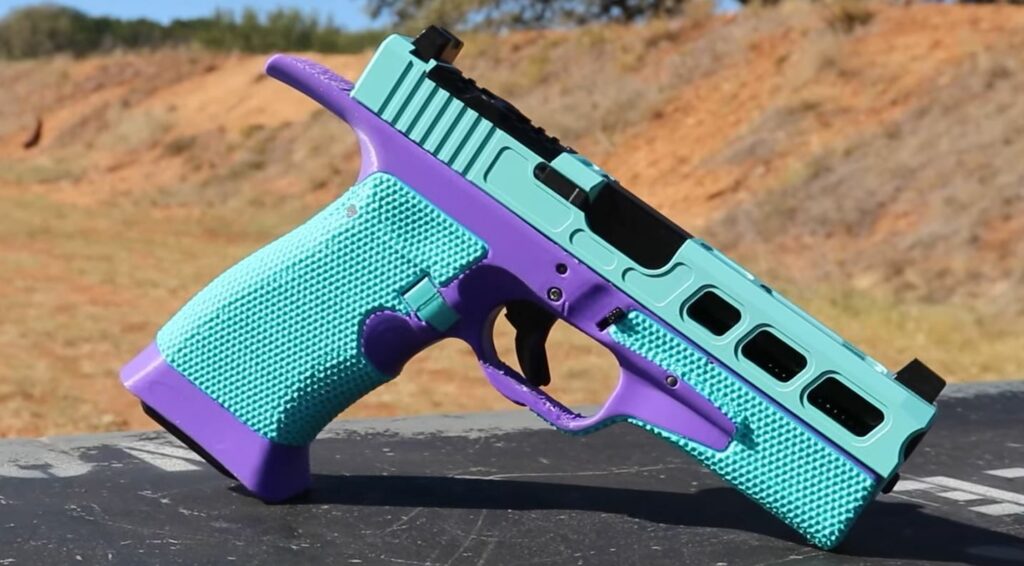
Yes, 3D printed guns do work and fire bullets the same way a normal gun, whether it’s a handgun or a rifle.
But, it’s been ubiquitously reported by users that 3D printed guns don’t perform as well as traditionally-manufactured firearms. Moreover, 3D printed weapons are usually less accurate and reliable than your average, mid-price firearm.
This is true for a handful of reasons, including the lack of strength in 3D printed plastic parts and any jiggling or extra space between the 3D printed parts and other gun components.
However, don’t get me wrong; 3D printed guns are still functional and capable of sending a bullet faster than the speed of sound. As such, don’t think of 3D printed guns as any less dangerous than real guns. If anything, they should be treated with even more care.
Are 3D Printed Guns Untraceable?
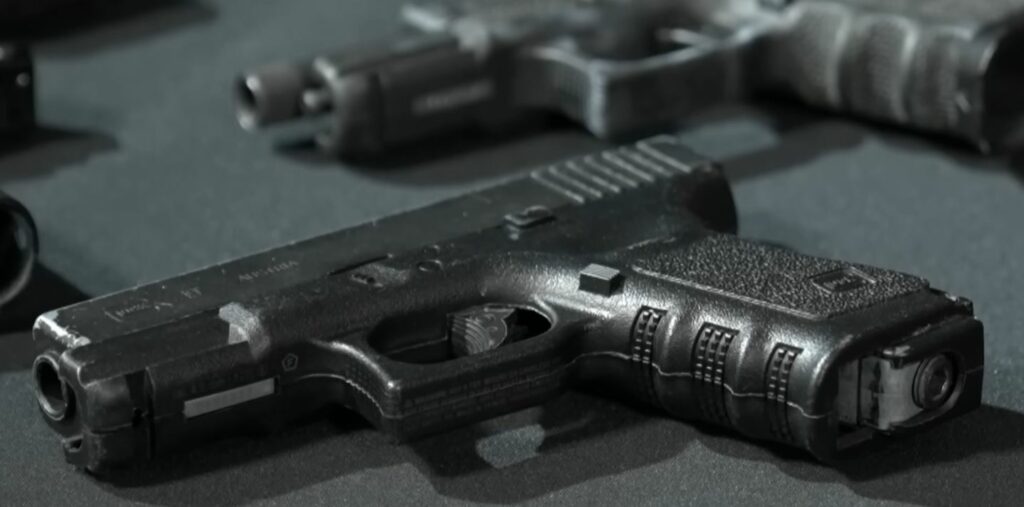
Kind of.
As we covered previously, 3D printed guns are considered ghost guns because they lack a serial number, unlike a normal gun sold by a manufacturer. However, that doesn’t mean 3D printed guns can’t be traced; it’s just a little bit more difficult to trace them.
Moreover, usually, to trace a gun, you (or law officials) would first look for the standalone serial number for the weapon itself. Because 3D printed guns are made using a handful of different parts, this wouldn’t work.
The next part they would look at is the lower receiver, which would contain a serial number that could be tied back to a background check if the part was purchased in a store or online. However, the whole point of a 3D printed gun is that the lower receiver is 3D printed and not store-bought. As such, you can’t trace most 3D printed guns through this part.
But the gun still could be traced through other components, such as those that make up the shooting mechanism of the firearm. Moreover, if the barrel (or any other purchased part) on the 3D printed gun contains a serial number, this could be brought to the manufacturer, who could be asked to reveal the name and address of the purchaser.
So, while it’s difficult to trace a 3D printed gun back to the owner, it definitely isn’t impossible.
Where to Find 3D Printed Gun Models and Blueprints?
This link has a bunch of 3D printed gun files. If you’re eager for more, here’s another cool GitHub link with different 3D printed gun blueprints for gun-related items. And if you hate downloading files one by one, you can download all files in one go here.
Want access to Deterrence Dispensed 3D printed gun templates? You can go here. Another popular site used by 3D printing gun enthusiasts is defcad.com.
The Bottom-Line
While gun control laws are closing in on 3D printed firearms, for now, at least here in the United States, these types of weapons remain legal. Homemade guns, like 3D printed ones, won’t be as reliable or accurate as traditionally manufactured ones. But they’re still a fun project to make if you’re a gun enthusiast or are a curious 3D printing hobbyist.
And there are many options for 3D printing your own gun. You can 3D print all sorts of different guns, including a variety of Glock pistols, rifles, and even revolvers. Of course, finding a 3D model for the lower receiver of your desired firearm is a bit difficult because of internet censorship. But repositories run by gun enthusiasts, such as Ctrl+Pew, as well as public forms, like Reddit, are a great place to look!
Hope this helps, and stay safe out there!


